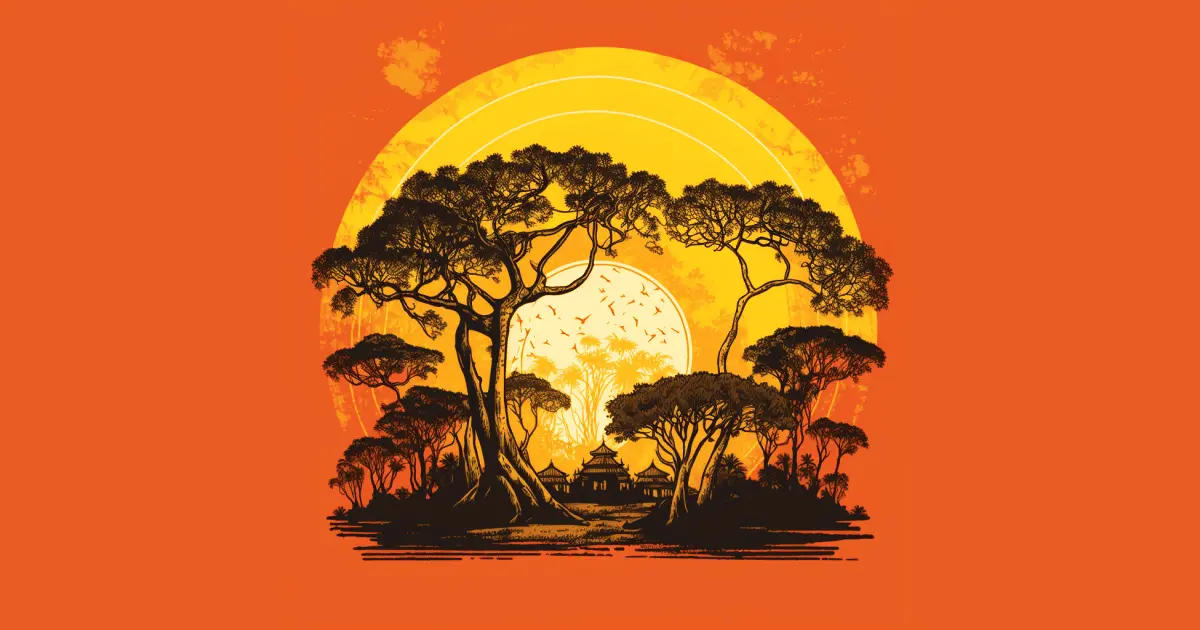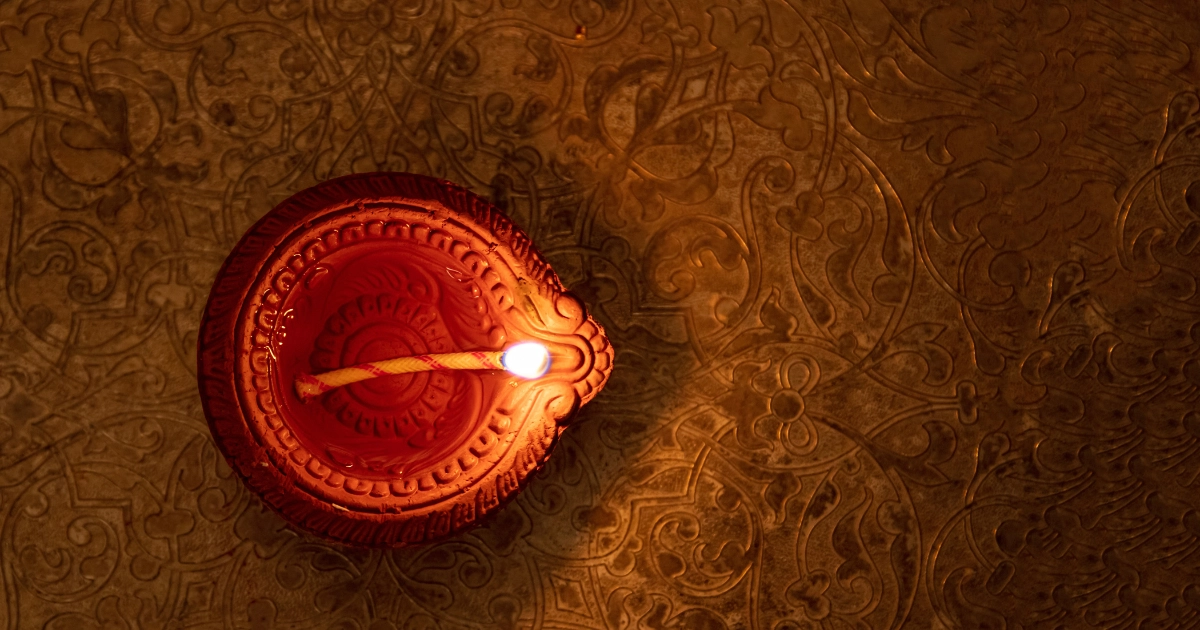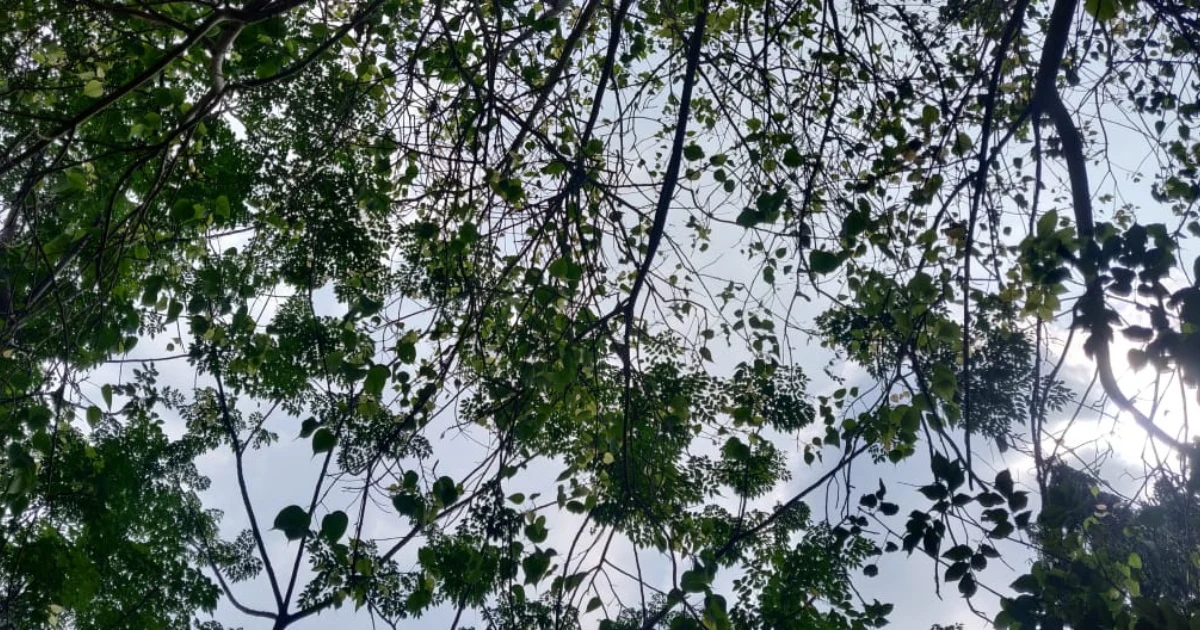How do dialects evolve into languages? And what role does colonialism play in this process, particularly in the context of Bhāratavarṣa, one of the greatest language cauldrons in the world? Answering these questions leads us on a quest which makes us understand the history of our culture, civilization and religion much better. To answer them we need to explore the process of how dialects evolve into languages and compare the process in North India to what happened in South India.
The languages of the South are ancient, with even the most recent of them having literature and manuscripts at least a thousand years old. Their regional cultures have been evolving and maturing for hundreds of years. Tamizh can claim an even longer history. It is perhaps the only language which has a vibrant literary culture alongside Saṃskṛta for more than two thousand years. It has manuscripts which are in some cases, as old as Saṃskṛta.
After the classical age ended with the Gupta Empire, other regional cultures, in the South and the rest of India, started maturing alongside a still vibrant culture of Saṃskṛta literature. While much was written in Saṃskṛta, original pieces began to be created in regional languages.
This is how dialects mature into languages; and how a common language becomes a literary culture. A dialect becomes sufficiently distinct and rich when some of its speakers start creating literary pieces in it. The written pieces spread both orally and through scripts, and finally reverse influence the spoken culture. They also achieve a certain level of standardization of vocabulary and patterns of usage, carving out distinct linguistic identities. In a few hundred years, the process is complete and a dialect finally evolves and matures to become a language and a literary culture.
While in the South, these linguistic cultures kept evolving almost without interruption, in the North it was brutally interrupted by the Islamic invasions, almost as soon as it had begun. The invaders persecuted knowledge, burned books and destroyed knowledge centers, ensuring that any novelty would be nipped in the bud. It was hard enough to preserve the most essential texts of Sanātana Dharma, let alone going about creating new ones and making new manuscripts. North India became in the middle ages, one single bonfire of manuscripts.
Due to this, the evolution of dialects into mature literary languages that continued in the South was prevented in the North. Those languages which had already developed regional cultures before the invasion of Islam and had already branched out into distinct languages due to other geographical and sociological reasons maintained their status, like Bangla and Punjabi. But even their literary cultures were subdued. Compared to Southern languages there are fewer medieval manuscripts to be found even in Punjabi. The other dialects in less populated parts of Central India, which had not matured into full written cultures, were the ones to suffer most.
These disruptions regularly prevented speakers from creating manuscripts in their dialects. This further prevented a regional standardization of literary language within a certain linguistic area, which is necessary for a dialect to become a language. The common man kept speaking these dialects and also kept creating oral literature in these languages but very few great works of written literature were created. Very few manuscripts were created. As a result, these dialects remained loose, in the absence of any standardization.
Mother Saṃskṛta vs. Persian/ Arabic Colonialism
In the pre-Islamic era, the overarching umbrella of Saṃskṛta culture and literature would continuously keep informing local and regional cultures and literatures about classical ideas and would even loan words about concepts which were new or philosophical in nature. This two-way process kept the regional cultures rich and made Saṃskṛta, the real lingua franca of India. This umbrella of Saṃskṛta culture kept India culturally unified and linguistically diverse. It simultaneously preserved diversity and ensured unity.
Saṃskṛta culture informed all of these languages and provided them with philosophical, aesthetic and scientific vocabulary while keeping intact their regional grammatical structures and also vocabulary for food, dress and other aspects of life which are dependent upon region. In this process, Saṃskṛta influence was never hegemonic and at the same time kept all the languages of India united in one sūtra.
Before the advent of Christian and Islamic colonialism in India, it was Saṃskṛta which provided the seed words to Indian languages. The universal element that Bhāratīya languages across India shared was their Saṃskṛta niṣṭha vocabulary, capable of taking Hindu darśana and Sanātana civilization to each and every corner of Bhāratavarṣa. The real tragedy with the advent of Islam in India, as far as the linguistic evolution of languages in India is concerned, is the collapse of the Saṃskṛta culture in the North during the middle ages.
With Persian taking the place of Saṃskṛta as the language of the court and the aristocracy, the two-way process discussed above, stopped. While Saṃskṛta was a loving parent which while enriching regional cultures, never tried to smother them, the new overlord, Persian, was hostile and violent. It persecuted anything ‘Hindu’, including its languages, dialects and ideas. The Persian interlude was very clearly a colonialist endeavor.
In the South, even with the decline of Saṃskṛta culture, the regional languages evolved and became very strong literary cultures soon, with vibrant linguistic identities. In the North, this standardization of regional languages could not be completed. Dialects remained dialects. Some rose and died, without the literary world taking any notice of them. Oral cultures remained oral, divorced with the written culture, which was completely overrun by Persian and Arabic.
This was nothing short of linguistic colonialism and it impacted not just Saṃskṛta but also the regional languages all over India, but more so in the North, where it disrupted the rise of dialects into languages. It cut off these different languages from each other by replacing crucial vocabulary of Saṃskṛta - which kept these languages culturally together by providing universal vocabulary of Hindu darśana to them – with Persian, Arabic and Turkish vocabulary which was alien to Indic ethos and thus played as a linguistic divider rather than unifier.
The literary polish that a highly evolved language like Saṃskṛta regularly provides to a regional culture stopped and dialects in the North, instead of evolving, started slouching off into simpler tongues. For example, in many forms of ancient Prākṛta in the North, the letter ‘sha’ was present. People from regional languages had no difficulty in pronouncing words starting from ‘sh’. However, at present, it has virtually disappeared from many dialects in North and Central India, and hence the tragedy where some folks in many North Indian dialects saying ‘suddha’ and not ‘śuddha’!
Most of the regions that speak Hindi now, remained in a kind of fluid state with different dialects, semi-understandable by other regions with many common words loaned from Persian and Arabic. While the common man kept speaking regional dialects with hardly any Arabic or Persian words in them, the literary culture gradually became Persianized. Many started writing in Persian instead. Many who wrote even in regional dialects had no choice but to use Persian/ Arabic script in the absence of Saṃskṛta and Devanagari.
In the North, the evolution of dialects into language had also started. ‘Pṛthvīrāja Rāso’ by Kavi Chandbardai, is an interesting example from the 13th Century. Many quote it to be the first literary creation in Hindi. Its date and setting are interesting. Chandbardai was a court poet of Prithviraj Chauhan, with whose defeat, Islamic destruction in India earnestly began.
After the Second Battle of Tarain, Islamic armies destroyed thousands of manuscripts and much of written literature in different dialects in and around Delhi, Kannauj and many other regions in the North, perished. This era, called ‘Ādikāl’ of Hindi literature by historians, has hardly any other great epics in a language similar to that of ‘Pṛthvīrāja Rāso.’ There are few other poems and literary works but they lack the standardization of syntax and diction that had started to become regular in the South by then.
In the South, under the Delhi Sultanate, Dakkhinī or Hindavī was used. Wedged between North and South it had a great impact on the evolution of Hindi later on. Refusing to learn regional languages, the Delhi Sultanate invented a pidgin language, bastardized from many dialects in the North, Persian and Arabic. It was written in Persian script. Most of the poets from this region, in this era were Muslims and we can choose to call their language Hindi or not, but it was written in Persian script and very different from what is proper Hindi now. Even today Hyderabadi Hindi is only funnily associated with Hindi proper. Most of the ‘literary creations’ in this Hindi are comic troupes.
The Bhakti Era saw many creations in the North. Goswami Tulsidas was matchless in content, language and skill. His influence can still be felt vibrantly in the North. But can we really call ‘Rāmacaritamānas’ to be in Hindi? There is no scientific standard with which to judge when a dialect becomes a language. They generally measure it by the scale of divergence of vocabulary. One scale says that if more than 50% (the scale varies from 40% to 60%) of the words in a particular dialect are different from its mother language, then it has become a different language.
Going by that yardstick, ‘Rāmacaritamānas’ would be in Awadhi, a language close to Hindi, but not quite. He wrote Vinaya Patrikā, another of his great creations, in Braja Bhaṣa. The Rīti Kāvya Kāla (18th and 19th centuries) was the era in which manuscripts with Hindi language and Devanagari started emerging properly.
All this while, the spoken language in various areas in the North kept incorporating many words from Arabic and Persian but poets tried hard not to include them in literary works. Things changed with the rise of Munshi Premchand in the modern era, who made it a point to use Arabic and Persian words profusely in his stories and novels. His immense popularity meant that his version of Hindi with Arabic and Persian littered profusely would become more popular amongst the next generation.
It is interesting to note that Premchand first wrote in Urdu. Only when the British confiscated his creations in Urdu and also his pen name ‘Nawab Rai’, that he started to write in Hindi under another pen-name Premchand. Though he changed the script, he barely changed the language and his Hindi remained well infused with Persian and Arabic loanwords.
It was this Hindi which was favored by Nehru when India became independent. He continued linguistic colonialism, mirroring his continuation of many colonial paradigms in India. His push for Hindi was not a nativist endeavor, because the version of Hindi that he chose to promote was so full of foreign words it was practically a non-Indic language in soul. Encouraged to infuse it even more with Urdu words by Bollywood, Hindi, more so than others, became full of FATE words (Farsi, Arabic, Turkish and English) and thus lost its Saṃskṛta and thus Indic character.
On the other hand, with the rise of the national movement in mid-19th century, a movement started to build up to cleanse Hindi of all Arabic and Persian. Great literary figures like Mahavir Prasad Dwivedi, Mathili Sharan Gupt and then Jayshankar Prasad, more than anyone else, helped create Hindi which was much closer to Saṃskṛta. Completing the long due process of homogenization and standardization of Hindi, they also removed the influence of Persian and Arabic from it.
Many other poets and authors used this ‘Saṃskṛtized Hindi’ rather than the ‘Hindustāni Hindi’ of Premchand. Later on leaders of nationalist organizations and institutions made it a point to use this ‘Saṃskṛtized Hindi’ in their discourses.
While definitions of what exactly constitutes a language are not scientific, we can safely say that Hindi is a real language. It is not a bastardized version of various languages in the North. The process of standardization and evolution of a dialect into a language started with Hindi too. ‘Pṛthvīrāja Rāso’ is a testimony of that. But it soon got aborted and kept getting interrupted over many centuries until the 19th century provided much needed respite and evolutionary boost to it.
Hindi is not ‘Saṃskṛtized Urdu’. Indian linguistic traditions in the North were always informed by Saṃskṛta culture. It was just that in the Middle Ages, this process was interrupted brutally by Persian/ Arabic linguistic colonialism which forced many Arabic and Persian words into dialects that constituted Hindi. When India woke up again, India’s nationalistic leaders cleansed Hindi of the Arabic and Persian corruptions in the 19th century. Every nation, when it wakes up to its identity, does the same. Rather than using the phrase ‘Saṃskṛtized Hindi’, ‘Saṃskṛta-informed’ or ‘Saṃskṛta-conducive’ Hindi would be a better phrase. Looking at history from this view, all Indian languages were ‘‘Saṃskṛta-informed’. In modern times, Hindi just came back to it.
It is sad that the ‘Saṃskṛta-conducive tradition became a minority one post-independence. The popularity of Munshi Premchand made Persianized Hindi famous. Gandhi promoted the same under the name of ‘Hindustāni’. To add tragedy to it, the official religion of Congress party, secularism, went hand in hand with ‘Hindustāni’ and ‘Urdu’ culture. As a result, Hindi in the modern era became bastardized by Arabic, Urdu and increasingly English. The linguistic colonialism which was started during the middle ages, got continued after India’s independence.
While Nehru pushed Hindi on to other linguistic states, he pushed Urdu, Arabic and English into Hindi.
In 21st century when India rises once again and reaches for its traditional roots, the umbrella of Saṃskṛta culture should once again inform regional cultures. While the languages in the South are already ‘Saṃskṛta-informed’ or ‘Saṃskṛta-conducive’, spoken Hindi in the North is brutally bastardized and increasingly so with every passing year. However, the other tradition of ‘Saṃskṛta-informed’ Hindi is still alive, albeit in minority circles. We should strive harder to make this the new mainstream. We should strive to make Hindi less English, Urdu or Persian in vocabulary and more Saṃskṛta.
In order to make its small contribution to make this dream a reality and to decolonize India’s languages, Bṛhat is coming up with a serial called Svarṇāñjali in which we will discuss Hindi literature in Saṃskṛta-niṣṭha Hindi through the lens of Hindu aesthetics and with the pivot of dharma. Coming articles in the series will elaborate more on the theme.







